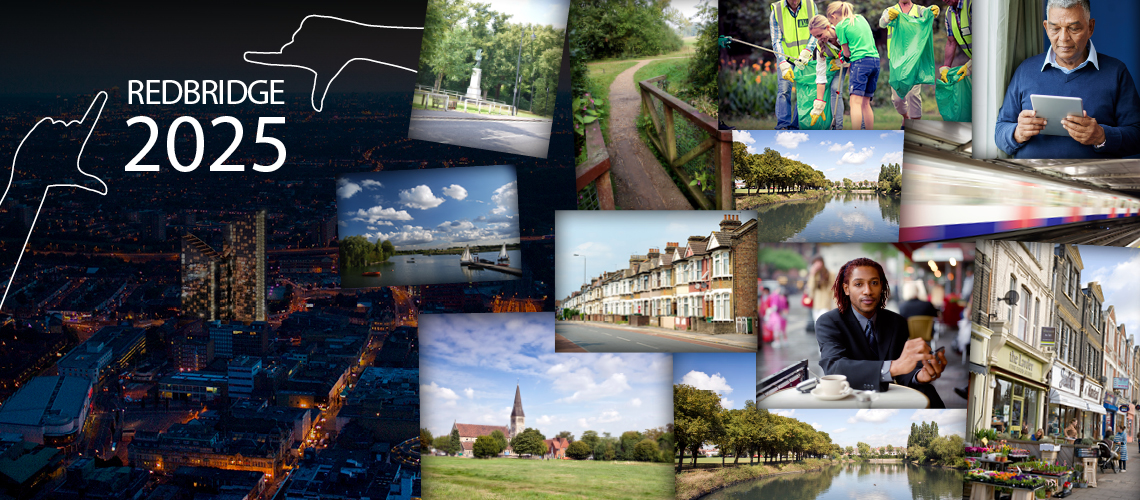
 Scenario 3: Invincible Suburb
Scenario 3: Invincible Suburb
London or Essex? The people of Redbridge have never quite resolved this conundrum. In the early 2020s the UK’s decision to leave the European Union decided the question for us. Developers had long been anticipating that Brexit might slow London’s population growth, reducing the Borough’s potential to develop new housing and forcing the council to rethink its regeneration plans over a longer timeframe.
There has been some growth in the south of the Borough, but the council’s strategy has shifted away from accommodating an influx of new residents towards offering a green, leafy suburb. The unwritten goal is to keep the population growing by using high quality of life to attract affluent workers from across London and the Home Counties.
Redbridge retains its distinctive character as a diverse set of urban villages and town centres. Visitors from the region come to attend open air performances at the striking Valentine’s theatre. Quality of life in parts of the Borough remains high. Our schools continue to be a beacon of quality across the country. In the south, Ilford has seen a few glittering towers go up and improvements in the quality of the shops and restaurants on the High Road, but progress is slower than anyone anticipated. The new civic and cultural quarter promised in 2018 is only just getting off the drawing board.
While life in the north of the Borough goes on much as it did a decade ago, elsewhere the pressure is on. Slow housing growth has not made Redbridge’s problems go away. On the contrary, it has entrenched many of them.
Population growth may have slowed, but it has not stopped. People are still coming into the Borough, which is well connected and still cheaper than Newham or Tower Hamlets.
With only limited new housing to accommodate them, the incomers are often housed in an increasingly overheated private rented sector which is slowing spreading into the north of the Borough, creating tensions among existing communities. Landlords are starting to buy up rental properties in Bridge and Monkhams and converting them into HMOs.
The result has been a triple whammy for local public services. Less growth has meant less money to pay for affordable housing and new civic facilities. Fewer new people coming into the Borough means that council tax and business rate income is lower than expected, while demand on the council’s services from vulnerable groups is still growing. At the same time, reduced migration has led to labour shortages across London’s public sector.
Many of the problems the Borough faced in 2017 have not been solved. Without economic and population growth to pay for new infrastructure, the Borough still lacks housing (particularly affordable housing), GP surgeries and leisure facilities. Redbridge has managed to preserve many of the things residents’ value about the Borough, but the pressure for change is building.
